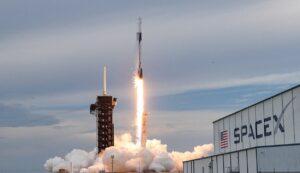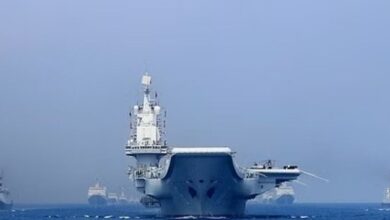SpaceX successfully “grabbed” the first-stage booster of its Starship megarocket
In a first for the world in the company’s pursuit of quick reusability, SpaceX successfully “caught” the first-stage booster of its Starship megarocket on Sunday when it returned to the launch pad after a test flight.

According to a livestream from Elon Musk’s SpaceX company, the “super heavy booster” had taken off attached to the Starship rocket minutes earlier and then made an impeccable controlled return to the same launch pad in Texas, where two enormous mechanical “chopsticks” reached out from the launch tower to bring the slowly descending booster to a stop.
A SpaceX representative said in a voiceover on the company’s livestream, “Folks, this is a day for the engineering history books,” when the launcher was securely in the tower’s grip and employees had burst into applause.
“The tower has caught the rocket!!” Musk, creator of SpaceX, posted on X.
Booster starts in top right corner. Watch to the end. Sound on pic.twitter.com/jS70tHLNcr
— 𝙺𝚒𝚖𝚋𝚊𝚕 𝙼𝚞𝚜𝚔
(@kimbal) October 13, 2024
Launched in clear conditions at 7:25 am (12:25 GMT). The top stage of Starship was scheduled to splash down in the Indian Ocean in an hour, while the rocket made its way back to the launchpad.
SpaceX made history in June when it successfully completed its maiden splashdown with Starship, a prototype spacecraft that Elon Musk thinks could eventually transport people to Mars.
In addition, NASA is eager for a reworked Starship to serve as a landing craft for crewed Moon landings as part of the Artemis mission later this decade.
SpaceX said that its personnel had “spent years preparing and months testing for the booster catch attempt, with technicians pouring tens of thousands of hours into building the infrastructure to maximize our chances for success.”
Before attempting to return the Super Heavy booster, teams were monitoring to make sure “thousands” of criteria were satisfied at the tower and on the vehicle.
As in earlier testing, the rocket would have been diverted for a splashdown in the Gulf of Mexico if the requirements had not been met.
Rather, after receiving the all-clear, the reentry rocket slowed down from supersonic velocity and the formidable “chopstick arms” hugged it.
“Learn fast, fail fast.”
The massive mechanical arms that Musk has dubbed “Mechazilla” have caused quite a stir among space enthusiasts.
When all sections are merged, Starship is 397 feet (121 meters) tall, or around 90 feet higher than the Statue of Liberty.
Standing 233 feet tall, the Super Heavy booster generates 16.7 million pounds (74.3 Meganewtons) of force, about double the power of the Saturn V rockets employed in the Apollo missions.
Even in the event that one of SpaceX’s rockets explodes spectacularly, the company’s “fail fast, learn fast” approach to quick iterative testing has ultimately sped development and contributed to its success.
Having just been founded in 2002, it has already outperformed the titans of the aerospace industry, leading the world in orbital launches and producing the only spacecraft in the US that is now approved to transport humans.
It has also produced the largest internet satellite constellation in the world, which is very useful in conflict and disaster areas.
Its original goal of making humans a multiverse species, however, is becoming less likely to be seen in light of Musk’s support for Republican presidential contender Donald Trump and his political affiliation with the right.
The Federal Aviation Administration and the firm have publicly spat in recent weeks over launch licenses and purported infractions. Musk has called for the resignation of the agency’s head, Michael Whitaker, and accused the agency of overreach.
Mark Hass, a specialist in marketing and professor at Arizona State University, said that whenever Donald Trump is elected president, “he’s trying to position himself for minimal regulatory interference with SpaceX.” “But it’s a calculated gamble if things go the other way.”





